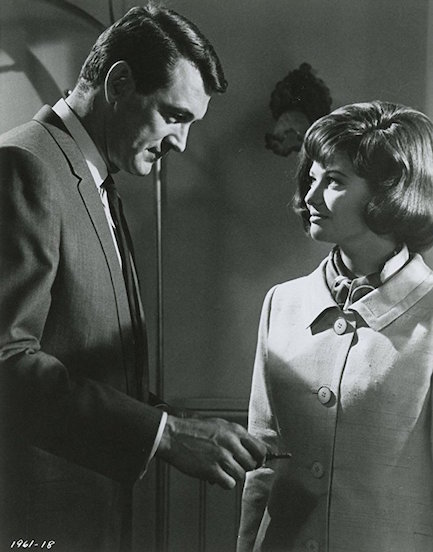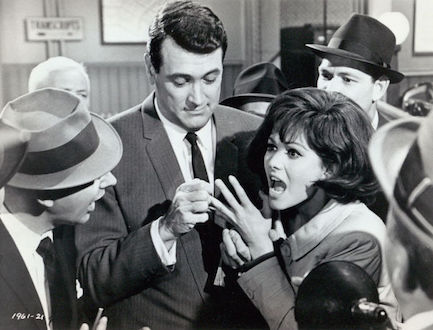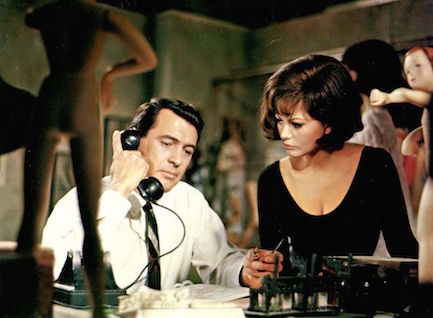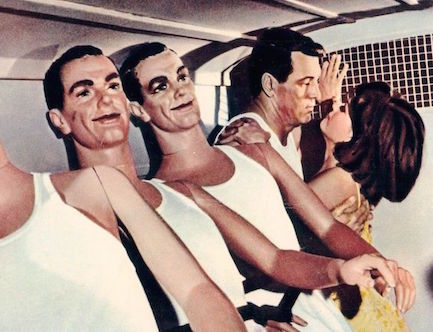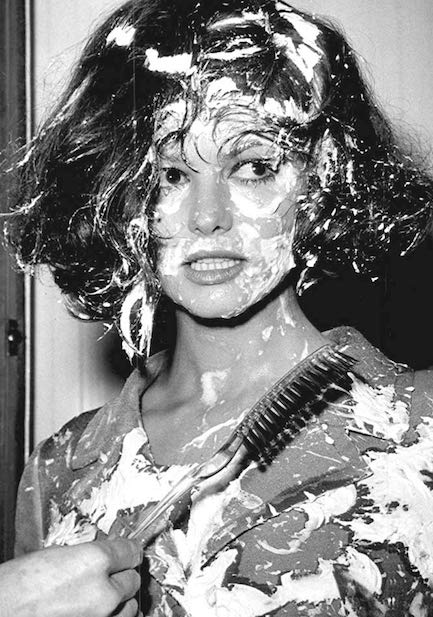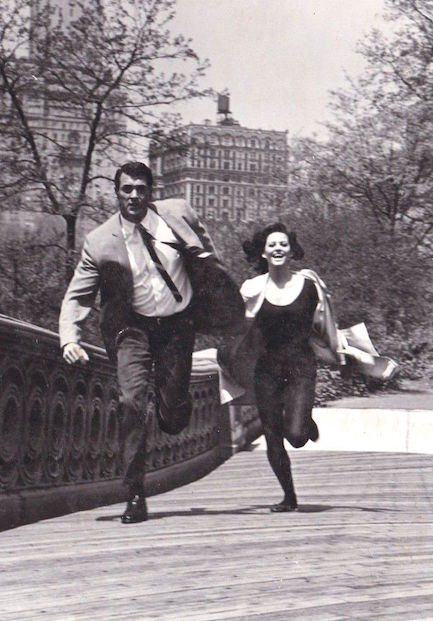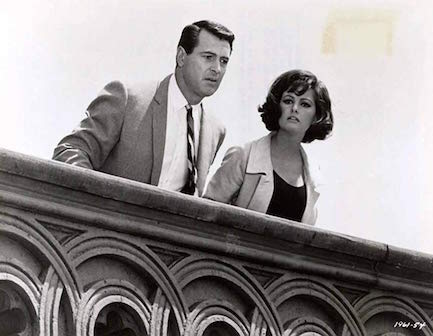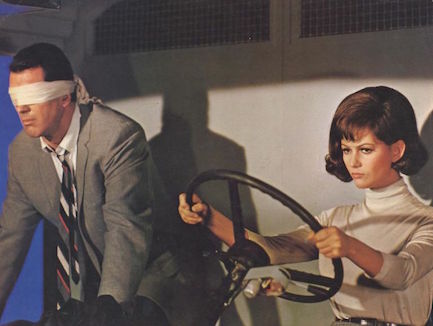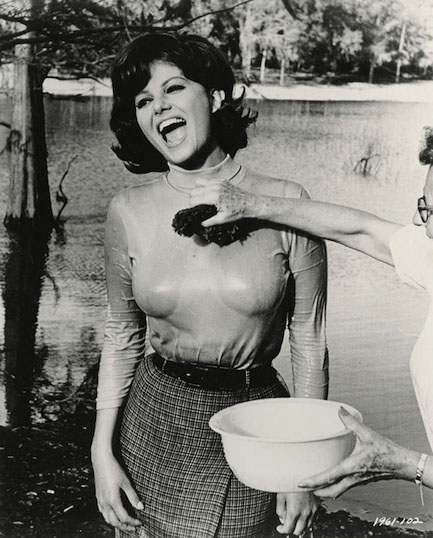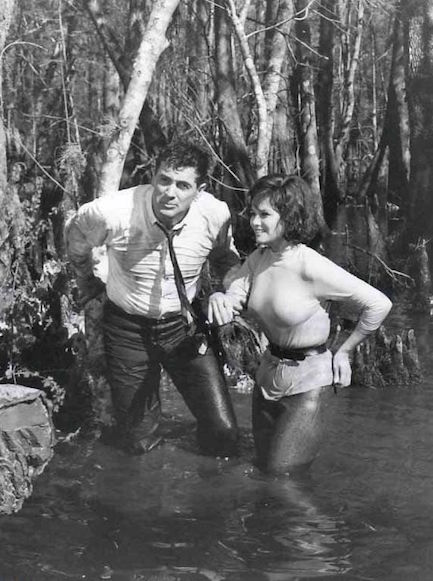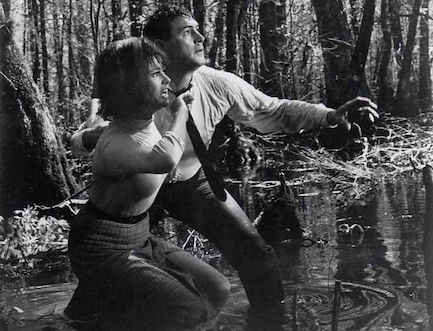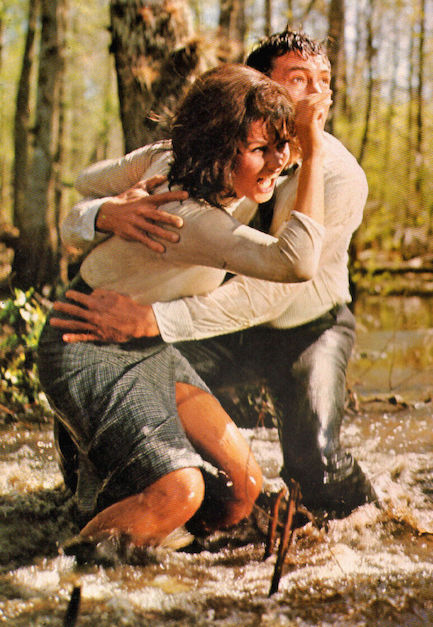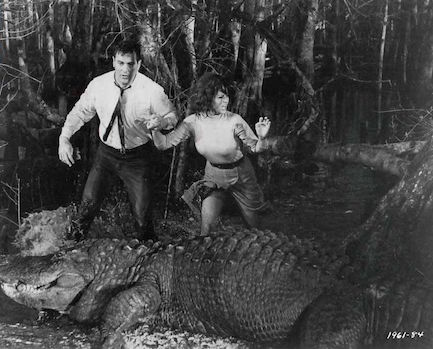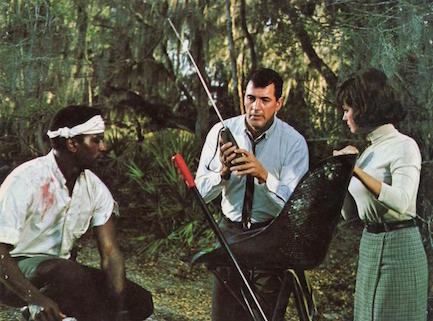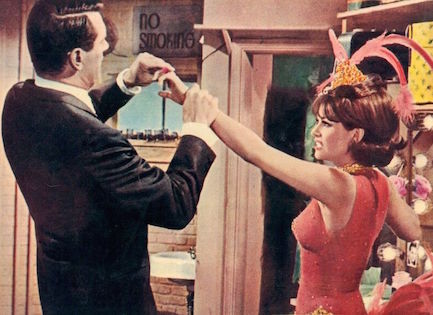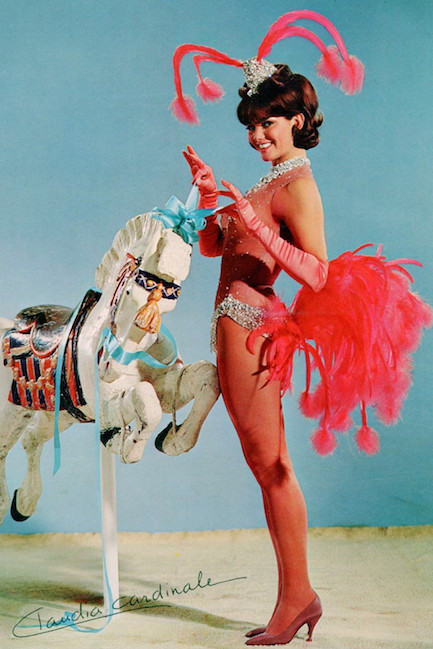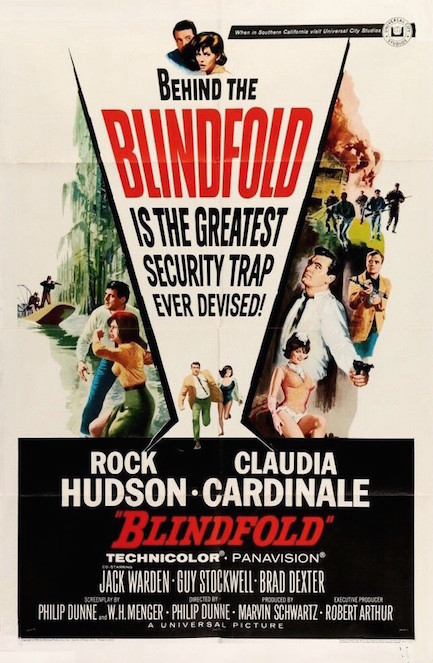| Femmes Fatales | Aug 17 2022 |

Whatever the background color she was always red hot.
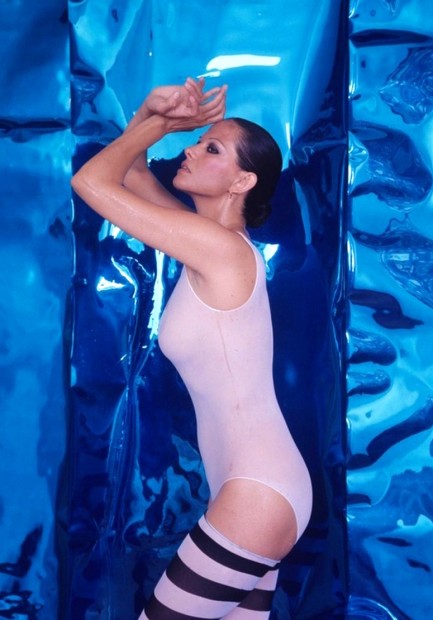
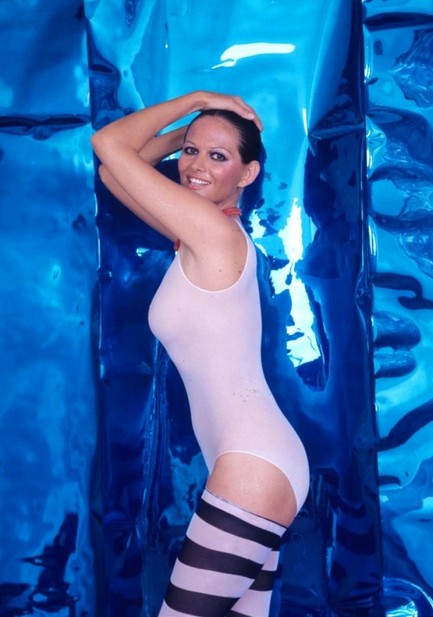
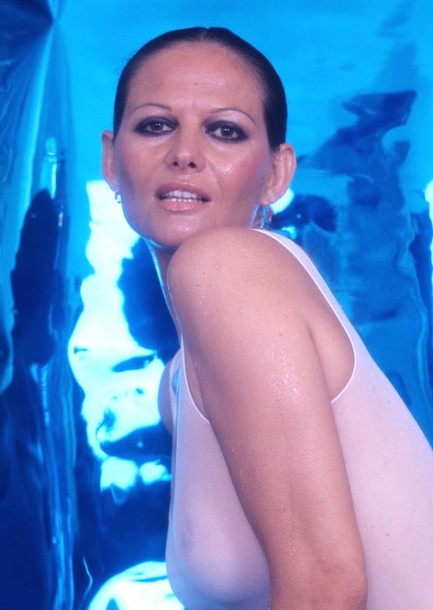
Above are three images of Tunisian born Italian actress Claudia Cardinale made by Italian photographer Angelo Frontoni. It's difficult to imagine European cinema without Frontoni. He photographed everyone, and he blurred the line between mainstream photography and erotica by collaborating with magazines like Excelsior and Playmen. Cardinale is pretty racy here by her standards. She worked with Frontoni many times over the course of her career, which began during the late 1950s and continues today, encompassing such films as 8½, The Pink Panther, Blindfold, Les pétroleuses, Fitzcarraldo, Once Upon a Time in the West, et al. These shots don't have a copyright date that we could find, but based on appearance we'd say they're from the late 1970s.
| Vintage Pulp | May 25 2019 |

And long story short, that's why my senior class voted me most likely to be kidnapped. So really, this comes as no surprise.
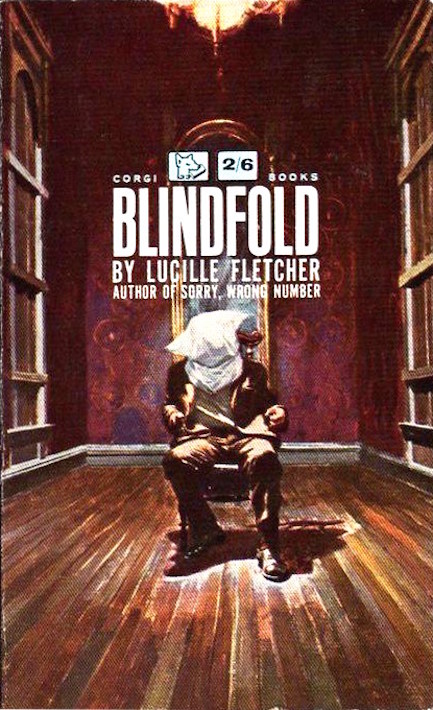
Above is an uncredited 1961 cover from Corgi Books for Lucille Fletcher's Blindfold. If her name sounds familiar it may because she also wrote the classic Sorry, Wrong Number. Her main character here isn't kidnapped. He's a psychiatrist who's flown top secret to treat a patient whose identity and location he's not allowed to learn. It's actually the patient who may be the kidnapping victim, though the doc is in danger too, from mere association. When events force him to try locating his mystery patient again, despite having been blindfolded each time he was taken to see him, the doc's keen senses come into play—everything from his internal clock to the feel of the ground beneath his shoes to his sense of smell.
Is he able to locate a distant place he's never seen with his own eyes? Well, it wouldn't much of a thriller if he couldn't. We don't know if this is the first time this gimmick was used in a novel, but it's a pretty cool plot contrivance. Interestingly, despite the Cold War seriousness of the novel and the intense menace of the paperback's cover art, the story was transformed into one of those insouciant little thrillers peculiar to the 1960s, along the lines of Charade or Arabesque. It was also called Blindfold and it starred Rock Hudson and Claudia Cardinale. In fact, see below...
| Vintage Pulp | May 25 2019 |

Hit novel Blindfold returns as a movie vehicle for Rock Hudson.
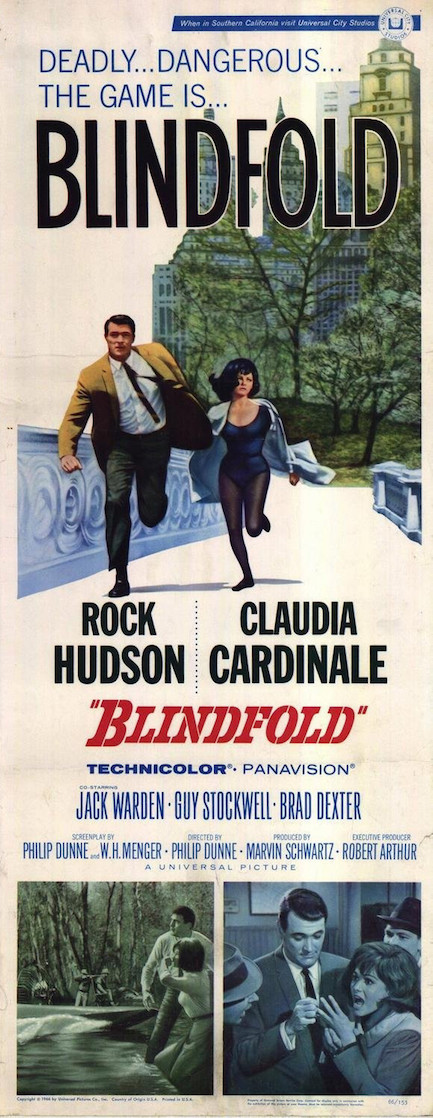
Rock Hudson was in the decline phase of his cinema career when he made Blindfold, and was just about to move into television, where he would score a huge hit with the cop show McMillan & Wife. But this film shows him in solid form. As in the novel, it all starts when his psychiatrist character is asked by a government agent to treat a mentally broken scientist in total secrecy, which Hudson reluctantly agrees to do, and is conducted to an isolated house while blindfolded. Days later he's run into—literally—by the sick man's sister Claudia Cardinale, who believes her brother has been kidnapped. Was the man who asked Hudson for help really with the government? Or did he merely want to unlock a secret hidden in the scientist's brain? When another agent appears and tells him this is precisely the case, Hudson and Cardinale have no idea who to believe. It begins to look like the scientist is being held against his will. If Hudson and Cardinale hope to rescue him, they need to pinpoint his location even though Hudson was blindfolded every time he was taken there.
As in the novel this is the central gimmick, and it seems an impossible task, but Cardinale convinces Hudson he can find this isolated house. Obviously, this section is handled in less detail than in the novel. Hudson estimates how long the flight was, eliminating impossible flight plans, learns where migrating geese fly south, and remembers what he heard during the car journeys—a body of water, a rickety bridge, a strange type of boat, and a church choir. It was a fun idea in the book and it's a fun idea on the screen too. In fact, it must have made an impression, because aspects of it were directly borrowed by Robert Redford for his 1992 comedic thriller Sneakers. Hudson and Cardinale, first as adversaries and later as budding romantic partners, try to unravel the where what why when and who, while shamelessly flirting with each other. As we said in the previous post, think of Charade or Arabesque. Blindfold isn't executed as well as those films, but it's certainly a nice little trifle, and it's worth watching. Anything with Cardinale is. And Rock ain't so bad either. The film premiered in the U.S. today in 1966.
As in the novel this is the central gimmick, and it seems an impossible task, but Cardinale convinces Hudson he can find this isolated house. Obviously, this section is handled in less detail than in the novel. Hudson estimates how long the flight was, eliminating impossible flight plans, learns where migrating geese fly south, and remembers what he heard during the car journeys—a body of water, a rickety bridge, a strange type of boat, and a church choir. It was a fun idea in the book and it's a fun idea on the screen too. In fact, it must have made an impression, because aspects of it were directly borrowed by Robert Redford for his 1992 comedic thriller Sneakers. Hudson and Cardinale, first as adversaries and later as budding romantic partners, try to unravel the where what why when and who, while shamelessly flirting with each other. As we said in the previous post, think of Charade or Arabesque. Blindfold isn't executed as well as those films, but it's certainly a nice little trifle, and it's worth watching. Anything with Cardinale is. And Rock ain't so bad either. The film premiered in the U.S. today in 1966.
